How AI Improves Garden Water Allocation
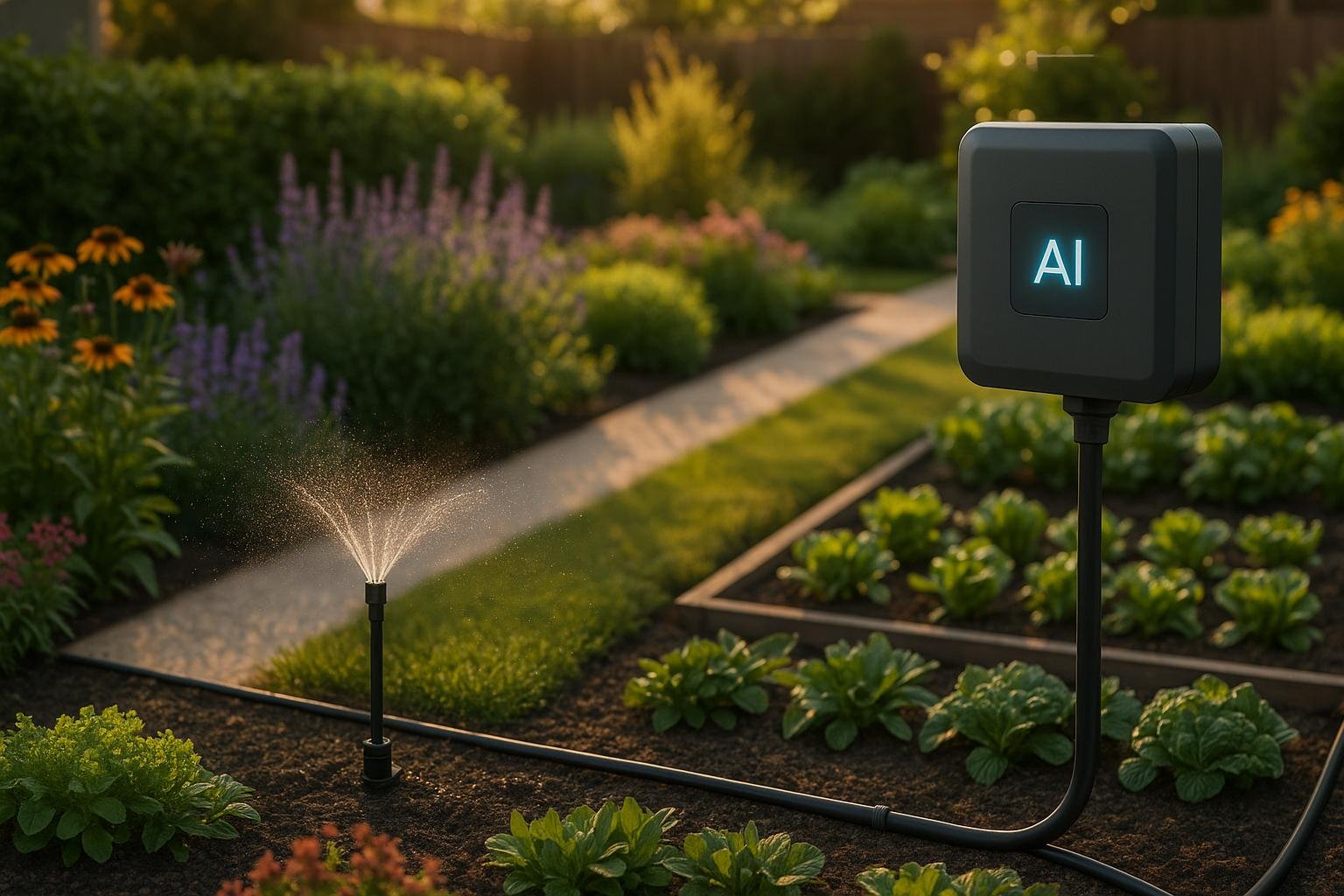
AI-powered watering systems are transforming how gardens are managed, saving water, reducing costs, and ensuring healthier plants. These systems use data from soil sensors, weather forecasts, and plant-specific needs to create precise watering schedules. The result? Up to 50% less water usage, 30% higher plant yields, and minimal manual intervention.
Here’s how AI makes it happen:
- Real-time monitoring: Soil moisture sensors and weather data adjust watering to match conditions.
- Smart controllers: Machine learning predicts future water needs based on historical and current data.
- Automation: Systems manage watering schedules, detect issues, and send alerts.
Home gardeners benefit from lower water bills, stronger plants, and less maintenance. Tools like AIGardenPlanner even help design gardens for efficient water use. By upgrading to AI, you can create a garden that practically manages itself while conserving resources.
AI Controlled Smart Irrigation System

How AI Improves Garden Watering Efficiency
AI takes the guesswork out of garden watering, turning it into a precise science. By analyzing real-time soil moisture, weather conditions, and historical trends, AI systems create irrigation plans tailored specifically to your garden. This approach ensures plants get exactly the water they need, setting the foundation for understanding the technologies behind these smart systems.
Key Technologies Behind AI Water Allocation
AI-powered irrigation systems rely on three key technologies working in harmony:
- Soil moisture sensors: These devices measure critical factors like moisture levels, temperature, and humidity directly in the root zone. They continuously send data to AI algorithms, ensuring accurate monitoring.
- Weather data integration: By connecting to local forecasts, the system adjusts watering schedules based on predicted rainfall and temperature changes, optimizing water use.
- Smart controllers with machine learning: These controllers analyze historical data to predict future water needs. They can identify trends, such as increased water demand during fruit development or reduced needs during cooler seasons.
For larger-scale operations, aerial assessments can provide even more precision. For instance, a farm in Australia used satellite-based AI to identify water stress zones. This reduced their irrigation by 25% while improving crop uniformity [3].
Machine learning models constantly refine their accuracy by combining historical and real-time data. Over time, the system learns your garden’s unique characteristics - soil type, plant varieties, microclimates, and seasonal changes - allowing for even more precise irrigation.
Water and Cost Savings Benefits
AI irrigation systems deliver more than just precise watering; they bring measurable savings and convenience. For example, a California vineyard reduced its water usage by 35% with an AI-based system, all while maintaining crop quality [3].
These systems also promote healthier plants. By preventing both under- and overwatering, they help plants grow stronger and become more resistant to diseases.
Automation simplifies garden maintenance, too. AI systems eliminate the need for constant manual adjustments, and smartphone apps let you monitor and control the system remotely - even if you're on vacation.
| Benefit Category | Typical Improvement |
|---|---|
| Water Usage Reduction | 25–50% decrease |
| Crop Yield Increase | 20–30% improvement |
| Manual Labor Reduction | Significant reduction |
AI systems also support predictive maintenance by identifying potential issues with irrigation components before they escalate. This proactive approach minimizes costly repairs and plant losses. When adopted at a community level, these systems contribute to regional water conservation efforts, helping to preserve this essential resource while keeping gardens thriving and productive.
Setting Up an AI-Optimized Garden Watering System
Building an AI-powered irrigation system for your garden takes some planning and the right tools. The process involves three key steps: gathering the necessary hardware, connecting it to a smart platform, and designing your garden to optimize water use. Let’s dive into the details.
Required Tools and Components
To create an effective AI irrigation system, you’ll need three main components: smart irrigation controllers, soil moisture sensors, and weather data connections.
The smart irrigation controller acts as the system’s brain. It gathers data from multiple sources and makes real-time decisions about watering. Look for controllers with Wi-Fi connectivity and mobile app support so you can monitor and tweak settings remotely.
Soil moisture sensors are critical for precise water management. These sensors measure the moisture levels in the root zone, giving the AI system accurate data about your plants’ hydration needs. Be sure to calibrate the sensors to match your soil type and position them carefully to capture the most accurate readings.
Environmental sensors track factors like temperature, humidity, and sunlight. This data helps the AI adjust watering schedules to match weather conditions and seasonal changes.
If you want a DIY approach, you can use affordable microcontrollers and sensors to build your system. Just keep in mind that sensor placement is crucial - position them thoughtfully near plants and water sources. Use weatherproof enclosures and wiring to protect your setup from the elements.
Connecting Hardware to Smart Platforms
Once your hardware is in place, the next step is connecting it to an AI platform that can process the data and control the irrigation system. Modern AI-driven systems rely on interconnected sensors that continuously monitor conditions and adjust watering in real time.
Typically, this involves setting up a wireless sensor network. Sensors send data to a central platform, which may be cloud-based or use edge computing for faster responses. Many systems use WebSocket protocols to maintain real-time communication between sensors and the platform.
"AI leverages data from various sources - such as weather forecasts, soil moisture sensors, and satellite imagery - to make intelligent irrigation decisions. By continuously analyzing data, AI-driven irrigation systems ensure precise water distribution and efficient resource management." - Ted Wodoslawsky, c3controls [3]
Your system will have multiple layers working together. The sensor layer gathers environmental data, the communication layer transmits it, the processing layer uses machine learning to analyze patterns, and the control layer executes watering commands based on AI recommendations.
Each monitoring station in your garden is assigned a unique ID and access key, with additional details like location, plant types, and zone names stored on the server. This allows the system to dynamically manage multiple garden zones.
As the AI processes sensor data, it identifies patterns to predict future watering needs. Over time, machine learning models become more accurate, adapting to your garden’s unique characteristics - like soil drainage, plant water needs, and local climate conditions.
| Sensor Type | Data Collected | Use in AI Platform |
|---|---|---|
| Soil Moisture Sensors | Water content in the root zone | Real-time irrigation adjustments |
| Environmental Sensors | Air temperature, humidity, sunlight | Weather-based schedule changes |
| Image Sensors | Plant health, stress indicators | Detecting plant issues |
Once your hardware is connected, the focus shifts to designing your garden for efficient water use.
Using AIGardenPlanner for Design and Allocation
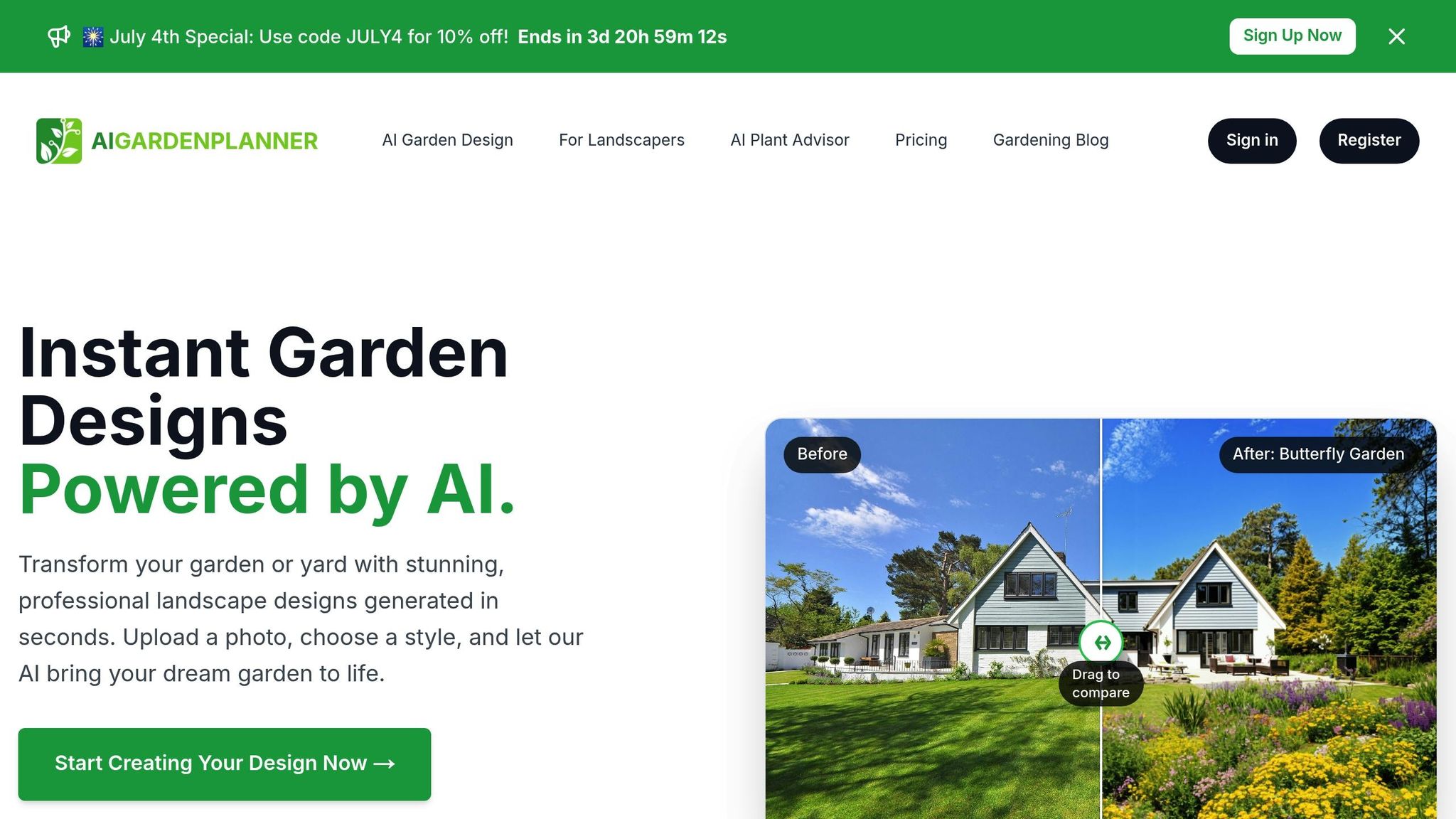
With your system up and running, the next step is optimizing your garden layout to make the most of your AI irrigation setup. This is where a tool like AIGardenPlanner comes in handy. It helps you design a garden layout that supports efficient water distribution from the start.
When you upload photos of your garden, AIGardenPlanner analyzes the space and suggests professional design options. These recommendations group plants with similar water needs and account for factors like sunlight and drainage. The platform offers over 50 garden styles, including layouts specifically designed for water efficiency.
The AI Plant Advisor feature takes things further by suggesting plants that are well-suited to your location, climate, and preferences. This ensures you’re choosing plants that thrive in your area’s natural conditions, reducing the overall strain on your irrigation system.
AIGardenPlanner also provides detailed guides for each recommended plant, including care instructions and watering schedules. These insights help you fine-tune your AI system to meet the specific needs of your plants throughout their growing seasons.
sbb-itb-4d6a8dd
🚀 Ready to Reinvent Your Garden?
Join thousands of homeowners who have transformed their gardens using our AI design tool. Upload one photo to explore endless possibilities.
Get your AI garden designs →Installing and Maintaining AI Water Allocation
Set up, fine-tune, and maintain your AI-powered irrigation system to maximize water efficiency and ensure your plants thrive.
Installation and Calibration
Start by mapping out your garden zones and placing soil moisture sensors in each area. Install your smart controller in a sheltered spot with reliable Wi-Fi access. Organize the irrigation system into distinct zones, using adjustable sprinklers or drip emitters to ensure even water distribution.
Next, calibrate the sensors to match your soil type and the specific water needs of your plants. Begin with conservative settings and tweak them as necessary. Gülcay Ercan Oğuztürk from the Department of Landscape Architecture at Recep Tayyip Erdoğan University highlights the benefits:
"AI-supported irrigation systems optimize irrigation strategies, providing a more efficient and effective plant cultivation process compared to manual irrigation." [6]
For easier maintenance, include shut-off valves at key points in the system. Proper calibration can significantly improve water efficiency, with reductions ranging from 30–40%, and in some cases, as high as 88% [6].
Automated Scheduling and Monitoring
Once installed, configure the system for automated operation. Use your mobile app or web interface to set up watering schedules. The AI will continuously monitor air and soil moisture levels, adjusting irrigation based on seasonal changes and local weather. By integrating weather forecasts, the system can delay watering when rain is expected or increase water delivery during hot, dry spells.
You can also customize moisture thresholds for different garden zones, ensuring plants receive water tailored to their specific needs. Remote monitoring lets you oversee the system from anywhere, with alerts notifying you of malfunctions or unusual water usage. Detailed analytics on water usage and plant performance can further refine your garden management.
Best Practices for Maintenance
To keep your system running efficiently, regular maintenance is essential. AI integration can reduce water usage by up to 25% [4], but only with consistent upkeep. During peak seasons, inspect sprinkler heads and drip emitters weekly to clear blockages or debris that could disrupt even watering. Check for misaligned or damaged components [7].
Maintain a log of your inspections and schedule a professional audit every three years [7]. Installing an irrigation meter can help track actual water usage, making it easier to identify leaks or other issues. Periodically review and adjust your watering schedule to reflect changes in climate, soil conditions, plant growth stages, and seasonal needs [7].
Eco-Friendly Practices with AI Water Allocation
AI is transforming how we manage water, making it possible to use resources more efficiently while reducing the environmental impact. From smarter rainwater harvesting to precise irrigation, these technologies are reshaping sustainability in gardening.
Rainwater Harvesting Integration
AI-powered rainwater collection systems start with smart sensors that monitor environmental factors like humidity, temperature, and atmospheric pressure in real-time. These sensors can predict rainfall with impressive accuracy, ensuring you capture the maximum amount of water during each storm [8]. Compared to manual or standard automated systems, AI-driven methods can increase collection efficiency by up to 25%, achieving rates as high as 90%.
For instance, in Bengaluru, an AI system boosted rainwater collection efficiency by 30% while also monitoring water quality in real-time [8].
What makes these systems even more effective is their ability to learn from historical weather data and use predictive analytics. By understanding local rainfall patterns, your AI system can create tailored collection strategies, ensuring optimal performance for your specific region [8].
Once you've collected rainwater efficiently, the next challenge is using it wisely.
Smart Water Usage
AI takes water distribution to the next level by directing stored rainwater exactly where it's needed. By analyzing factors like local weather, soil moisture, and plant requirements, AI ensures that water is used efficiently and effectively [1].
This approach isn't just about convenience - it has a measurable impact. AI systems encourage the use of recycled and rainwater, reducing freshwater consumption by up to 25% [5]. This matters because agriculture uses about 70% of global water withdrawals, with roughly 60% wasted due to inefficient practices [2][9].
AI doesn’t stop at scheduling. It evaluates soil and crop data to find the perfect balance between rainwater use and plant needs. Through precision irrigation, water is delivered in exact amounts, improving efficiency by up to 95% compared to traditional methods [5]. This means your garden gets just the right amount of water at the right time, eliminating guesswork.
AI's capabilities extend beyond gardens. In Barcelona, Spain, an AI-powered system manages rainwater strategically to prevent flooding. By forecasting heavy rainfall and releasing stored water at the right time, the city has reduced flood incidents by 25%, safeguarding infrastructure while conserving water [8].
Additionally, AI systems keep a close eye on water levels in storage tanks, ensuring they remain within optimal ranges [8]. They also monitor water quality, ensuring the collected rainwater is safe for use in your garden.
Conclusion: Getting the Most from AI in Garden Water Allocation
AI-driven water allocation is changing the way gardens are managed, offering impressive results: water usage can drop by 20–72%, while plant health and yields can improve by 20–30% [10][4]. These benefits translate to lower water bills and flourishing plants, making it a win-win for gardeners.
The secret to success lies in combining the right tools and design. Modern AI systems adjust to real-time weather changes, identify issues like leaks or faulty valves before they escalate, and learn the specific needs of your garden. This means less manual work for you and better results overall.
Incorporating tools like AIGardenPlanner takes these benefits a step further. This platform helps you design your garden with water efficiency in mind, starting from the layout. Its AI-powered tools and tailored plant recommendations consider your local climate and soil conditions, ensuring your irrigation system works seamlessly with plants that thrive naturally in your environment. This thoughtful planning reduces water consumption and maximizes the effectiveness of AI irrigation systems.
Experts agree that AI irrigation doesn’t just save water - it also helps tackle larger challenges like water scarcity [10][4]. By upgrading from traditional timers to intelligent systems, you can continuously optimize water use while cutting costs and supporting the environment.
Start by understanding your garden’s layout and the needs of your plants. When paired with smart technology, a well-planned design can create a self-sufficient, water-efficient garden that practically takes care of itself.
FAQs
How do AI irrigation systems know how much water each plant in my garden needs?
AI irrigation systems leverage smart sensors to keep track of soil moisture, temperature, and humidity in real time. Using advanced algorithms, these systems analyze the collected data to figure out the precise water requirements for each plant, taking into account its species, location, and surrounding conditions.
By automatically managing water flow, these systems ensure plants receive the optimal amount of hydration - no more, no less. This approach not only supports healthy plant growth but also helps cut down on water waste, making it a practical solution for maintaining a lush garden while conserving resources.
What do I need to set up an AI-powered watering system for my garden?
To create an AI-powered watering system for your garden, you’ll need a few key components and some basic setup steps. Start by installing soil moisture sensors and weather monitors to gather real-time data. These devices connect to a microcontroller, like an Arduino or NodeMCU, which will process the information. Other essential parts include a water pump, solenoid valves, relays, and a power supply. For added convenience, you can include a Wi-Fi module to enable remote control.
Once the components are hooked up, the system uses the data from the sensors to monitor soil moisture and weather conditions. It then automatically adjusts the water flow, ensuring your garden gets just the right amount of water. This setup not only minimizes water waste but also keeps your plants healthy with minimal effort on your part.
Can AI-powered irrigation systems adjust to unexpected weather changes and save water effectively?
AI-powered irrigation systems make watering smarter by analyzing real-time environmental data like soil moisture, temperature, humidity, and sunlight. Equipped with advanced sensors and cloud-based technology, these systems automatically tweak watering schedules to align with current conditions.
When unexpected weather events like storms or heatwaves occur, these systems recalibrate to avoid overwatering or underwatering. This not only conserves water but also keeps plants healthy, even when the weather takes a turn. By efficiently managing water use, these systems offer a reliable way to support gardening while cutting down on waste.
🎨 Visualize Your Dream Garden Today!
Transform any outdoor space into a professional landscape design in minutes. Just upload a photo, choose your style, and let our AI do the rest.
Start your garden transformation now →Related posts
Related Articles
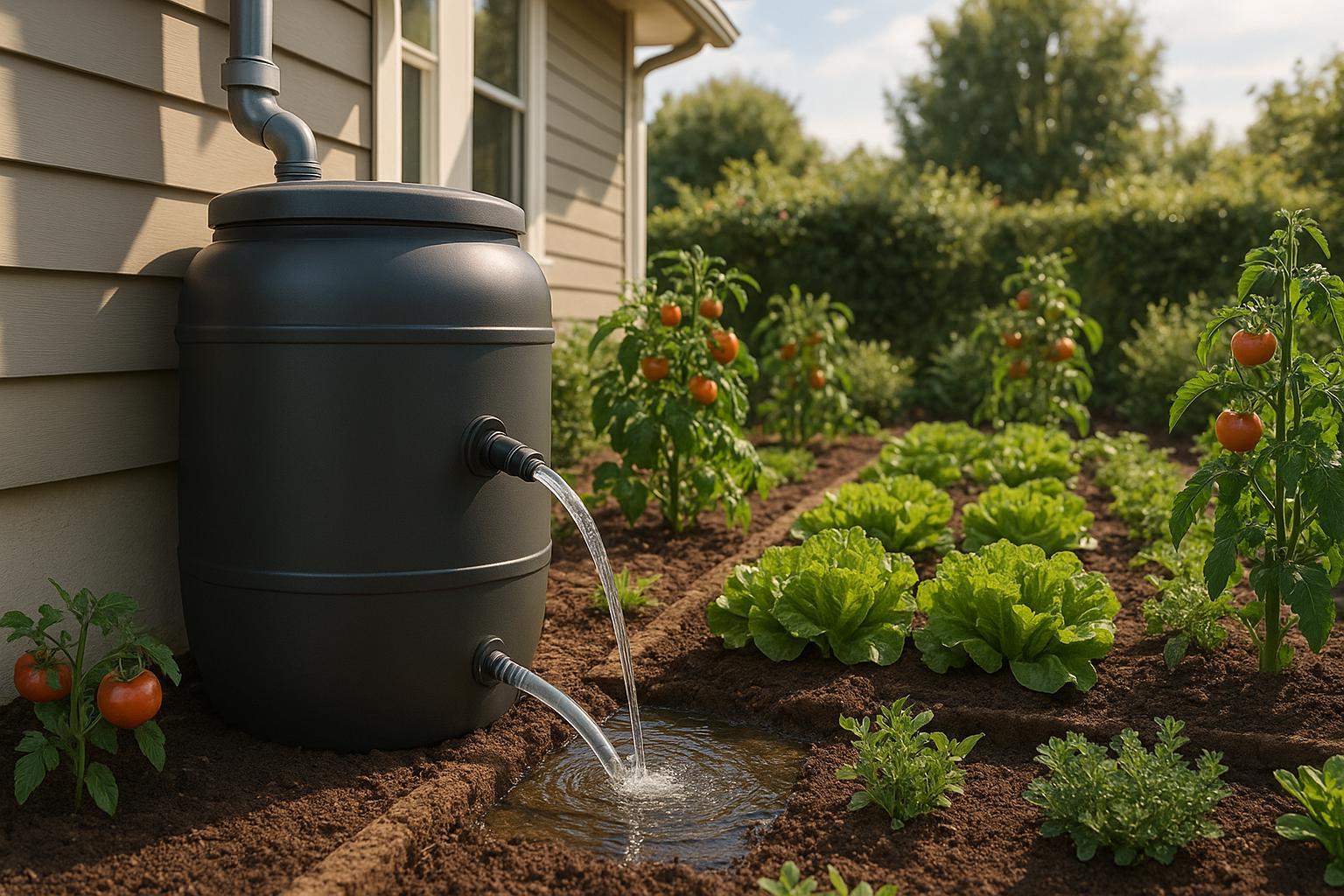
Ultimate Guide to Rainwater Filtration for Gardens
Learn how to implement an effective rainwater filtration system for your garden, enhancing plant growth while conserving water and reducing costs.
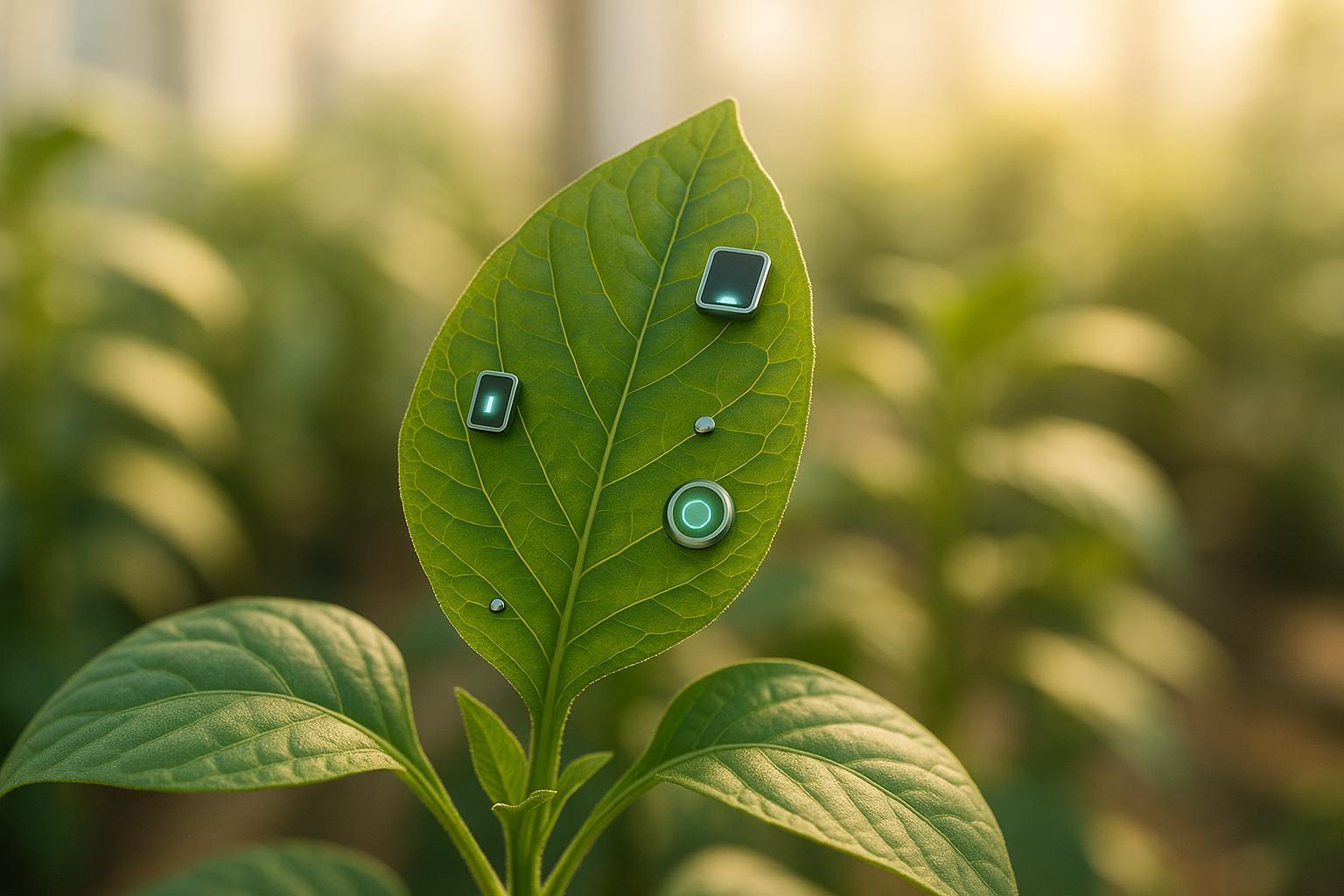
How Multi-Sensor Systems Detect Plant Diseases
Explore how multi-sensor systems revolutionize plant disease detection with advanced technology, offering early insights and precise treatment strategies.
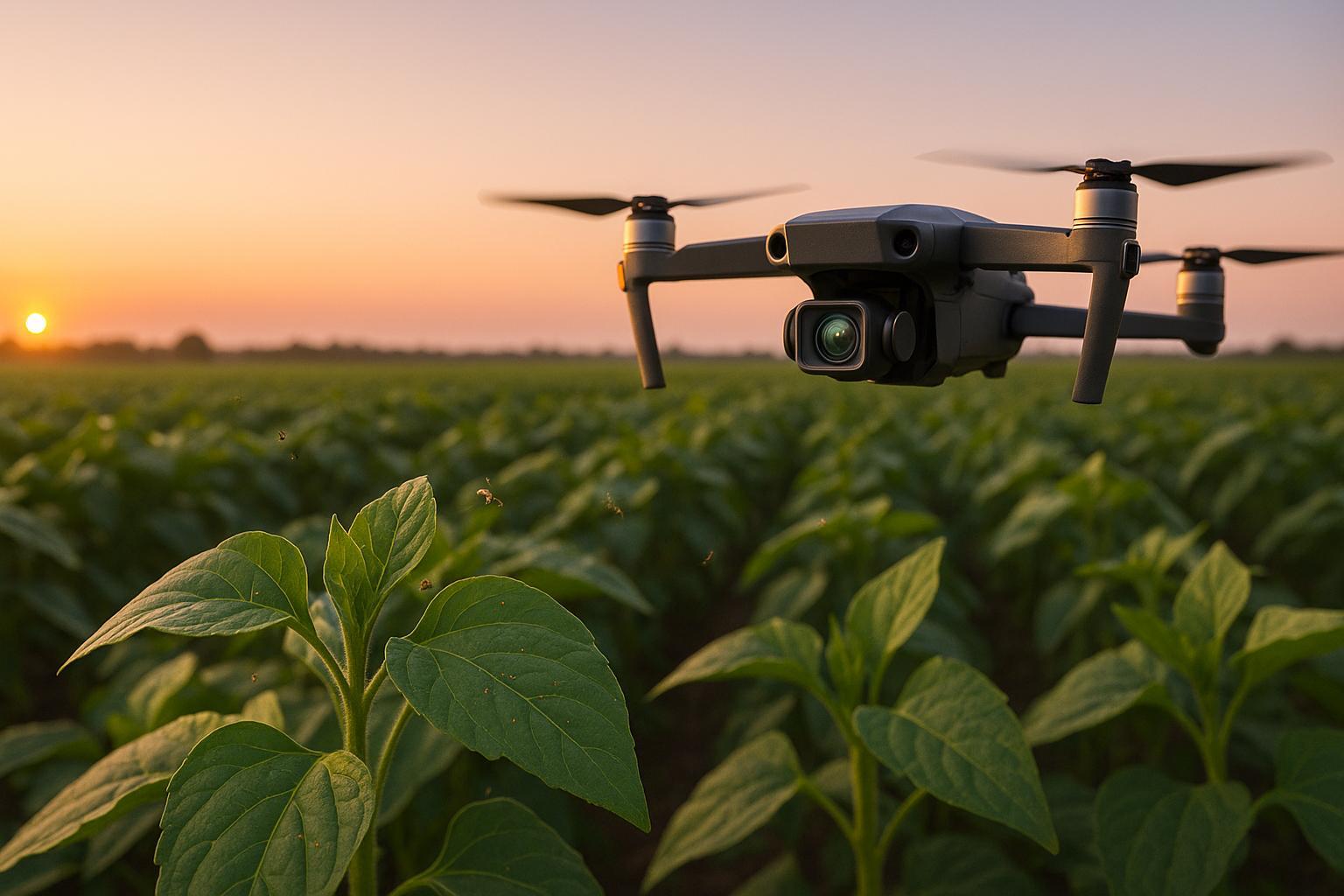
AI Pest Detection in Video Feeds
Learn how AI pest detection systems enhance crop management through real-time monitoring, reduced pesticide use, and actionable insights for farmers.
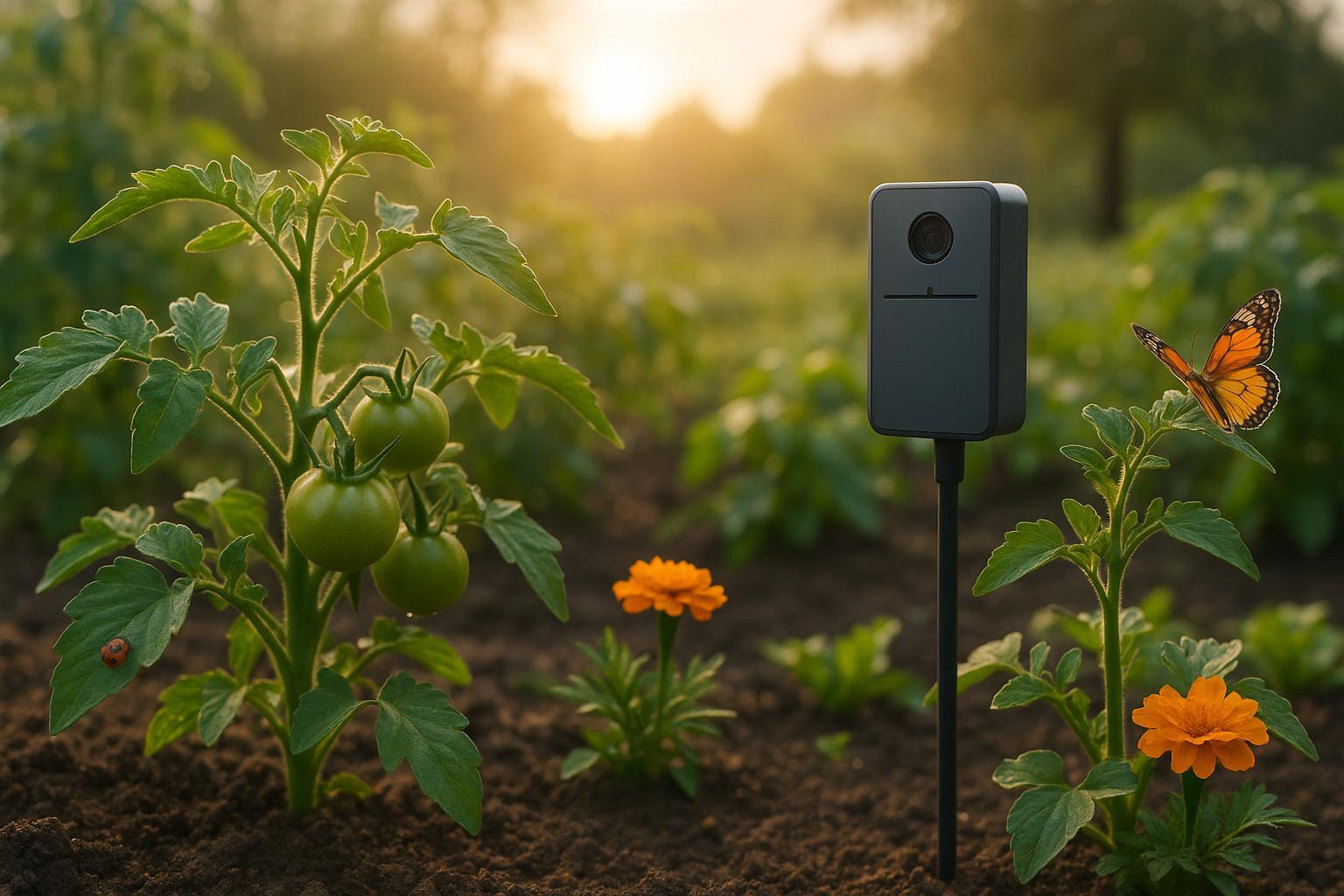
AI Pest Control: How Algorithms Detect Threats
Explore how AI is transforming pest control through early detection, eco-friendly solutions, and accessible tools for all gardeners.
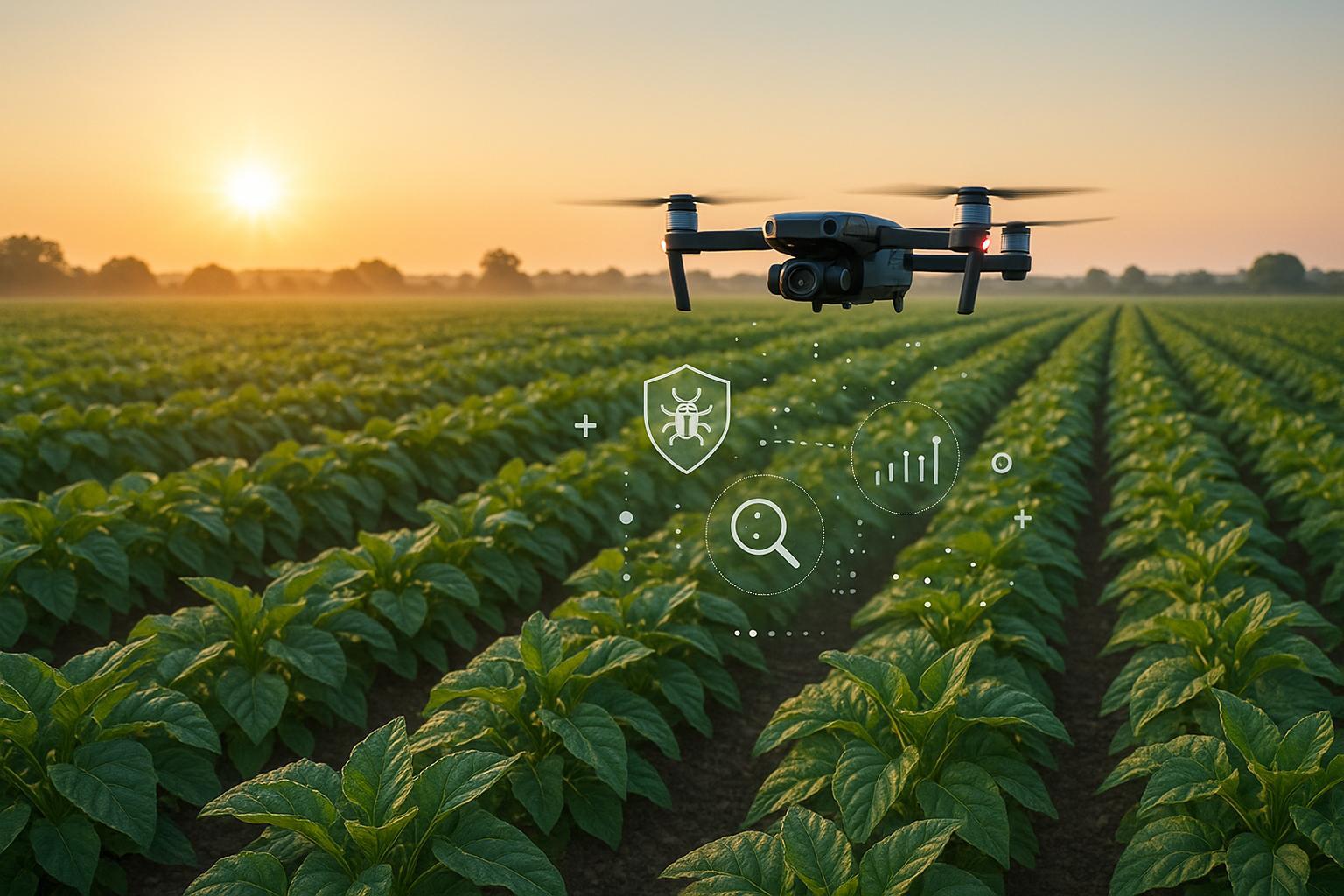
AI Pest Detection: How Early Warnings Work
Explore how AI pest detection revolutionizes agriculture by providing early warnings, reducing crop damage, and promoting eco-friendly pest management.
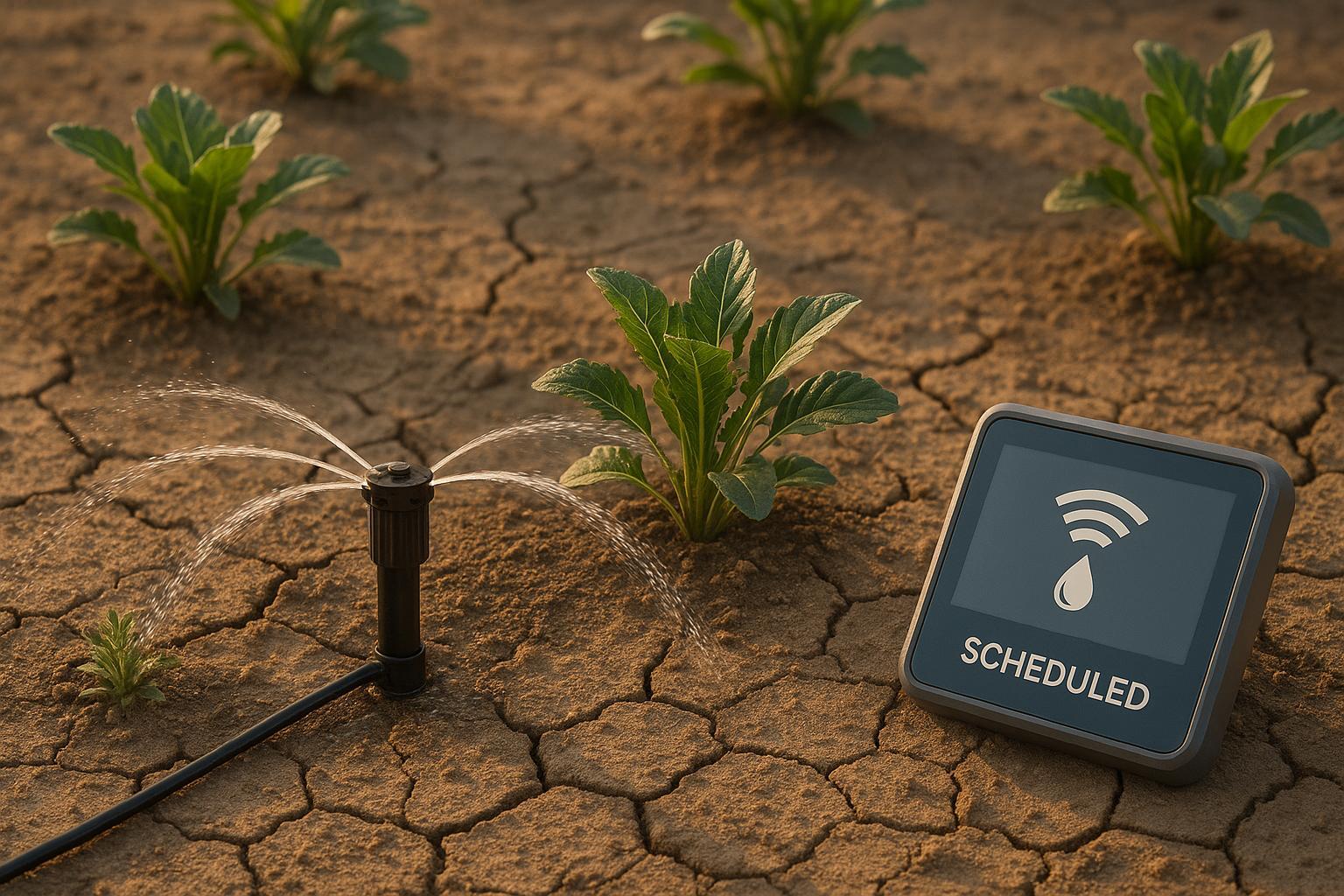
AI Watering Schedules for Drought Conditions
AI-driven irrigation systems optimize water use during droughts, improving plant health and conserving resources through real-time data and machine learning.